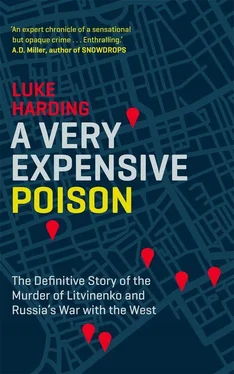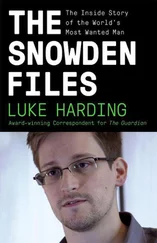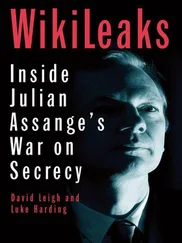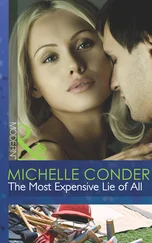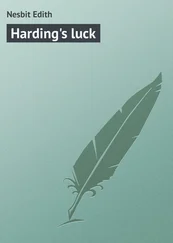According to Putin’s new Crimea doctrine, Russia was entitled to ‘protect’ ethnic Russians wherever they were. The collapse of the Soviet Union had stranded large numbers of them outside the formal boundaries of the Russian Federation – in the Baltic states, Ukraine, Moldova and northern Kazakhstan. Putin wasn’t Hitler, whatever cartoons on the Maidan might say. But his apparent project to redeem left-behind Russians was reminiscent of Adolf’s own ‘co-ethnic’ policy, used to justify Germany’s Anschluss of Austria and seizure of the Sudetenland.
The doctrine raised the question: where next?
The answer came in autumn 2015 when Moscow launched a series of air strikes in Syria. The ostensible target was Islamic State terrorists. In reality, those bombed were less extreme groups fighting against Bashar al-Assad’s regime.
This was the first time the Kremlin had launched a major military action outside the borders of the former Soviet Union since the end of the Cold War. Putin’s objectives here were several. They included bolstering Assad, securing Russia’s air and naval bases on Syria’s coast, and – of course – rubbing Obama’s nose in it. In contrast to the US’s confused Syria strategy, Putin was showing decisive global leadership.
The EU’s response to Russian aggression in Ukraine was insipid, to say the least. As Putin had calculated, neither Washington nor Brussels was prepared to answer Russian hard power with analogous military force. There would be no weapons sent to Kiev. Lethal aid was ruled out.
Instead, western leaders offered … expressions of grave concern. Ukrainians who had stood on the Maidan in sub-zero temperatures, declaring their basic rights, were unimpressed. Vendors in Kiev began selling T-shirts to disillusioned Europhiles with the slogan: ‘Fuck your grave concern’.
This left sanctions – the lever pulled by the US and its allies in the months to come. European governments were less willing to impose sweeping sanctions on Moscow than the White House was. The EU imported a third of its oil from Russia. It would suffer more pain than America, which was not dependent on Russian energy and did less trade. There was also the certainty that the Kremlin would respond with counter-sanctions.
The first EU sanctions list identified twenty-one individuals. All were accused of undermining Ukraine’s sovereignty and territorial integrity. They included Aksyonov and Russian parliamentarians. One was Leonid Slutsky, a leading member of the ultra-nationalist Liberal-Democrats. Andrei Lugovoi was Slutsky’s party colleague in the Duma. Most of those on the list were small fish – minor functionaries in the new Crimean ascendancy.
The US lists went further. They included Putin’s closest political friends and cronies. Moreover, they sent a not-so-subtle message to Moscow: that America had identified Putin’s personal financial interests and was prepared to target them.
Putin’s wealth is a mystery. Officially, he lives the modest life of an ordinary citizen. In 2007, leaks from inside his presidential administration suggested he was worth $40 billion via undisclosed interests in oil and gas companies. Putin denies this. But the subject of the boss’s wealth is something the Kremlin is reluctant to discuss.
According to leaked US State Department cables, members of Putin’s inner circle acted as ‘proxies’ for his secret assets abroad. Formally, Putin owned nothing. Informally, he controlled many billions of dollars, which belonged to his team, most of them close allies and friends from his early career in East Germany and St Petersburg and now elevated to high offices of state.
The US list included Viktor Ivanov, the former career KGB officer who was the subject of Litvinenko’s explosive report. What – if anything – did US intelligence know of Ivanov’s possible involvement in Litvinenko’s assassination? Alongside his job as head of the federal drugs agency, Ivanov sat on Russia’s security council. It also included Sergei Ivanov, Russia’s hawkish deputy prime minister, once seen as a possible presidential successor, who knew Putin from the 1970s and Leningrad’s KGB.
Then there was Gennady Timchenko, another long-term Putin associate, whose Swiss-based company Gunvor exported a third of Russia’s seaborne oil. Gunvor rejects claims that Putin is a Gunvor beneficiary. The US Treasury Department was unconvinced by these denials and said: ‘Putin has investments in Gunvor and may have access to Gunvor funds.’
The department said it was imposing asset freezes and visa bans on the Russian leadership’s ‘inner circle’. It threatened ‘increasing costs’ for Russia if it carried on with its ‘provocative actions’ and its efforts to destabilise Ukraine.
Many of those on the list were members of Putin’s ozero dacha cooperative near St Petersburg. The president’s friends and former neighbours formed a new oligarchic class, and in many cases were richer than some of the original oligarchs they replaced. There was Yuri Kovalchuk, the head of Bank Rossiya – a ‘personal bank for senior officials of the Russian Federation’, according to the US. Also Vladimir Yakunin, the head of Russian Railways, a prominent conservative and former diplomat to the UN with alleged KGB connections. And Arkady and Boris Rotenberg, Putin’s former St Petersburg judo partners. The treasury alleged the pair had ‘made billions’ from contracts awarded by Putin for Gazprom and the 2014 Sochi winter Olympics.
This was, in short, Litvinenko’s mafia state.
* * *
By summer 2014, Donbas had become a full-blown war-zone. The regional governor – billionaire industrialist Sergei Taruta – fled Donetsk with his advisers. He escaped just in time. A group of Chechen gunmen turned up at his HQ, the city’s multi-storey Hotel Victoria, shouting: ‘Where is the fucking paedophile?’ Fighting broke out around Donetsk Airport. Rebels held the approach road; the Ukrainian army the terminal. There were clashes further east near Luhansk. Ukrainian soldiers were in the airport there and villages to the north.
The separatists were losing ground. Ukrainian forces had one substantial advantage: air power. When pro-Russian fighters seized the airport terminal building, Kiev responded with airstrikes; two lorries transporting wounded were hit, most of the Chechen ‘volunteers’ wiped out. Units from Ukraine’s national guard besieged Slavyansk, where Colonel Strelkov commanded a force of around 1,000 fighters. The rebels had mortars, small arms and a couple of armoured personnel carriers and infantry fighting vehicles. They were running low on ammunition and were outgunned.
In early July, the rebels broke out. Strelkov retreated south to Donetsk; others from his group headed southeast to the town of Gorlovka, where 350–400 separatist fighters were based. With the Donetsk People’s Republic facing extinction, Russia moved to tip the balance in the rebels’ favour. It supplied them with heavy weapons, smuggled across the border. They included Grad multiple rocket launchers and self-propelled artillery pieces.
Suddenly, Ukrainian military aircraft were being shot out of the sky. An Ilyushin was downed as it came in to land at Luhansk Airport. All forty-nine soldiers on board were killed. Russian agencies reported that the rebel ‘people’s republic’ had got hold of the Buk, a sophisticated surface-to-air missile launcher. The Buk could fire missiles up to an altitude of 22,000 metres. The DNR tweeted news of its new weapon. In mid-July, two more Ukrainian planes were shot down: an An-26 military transport plane and a Sukhoi jet.
On 17 July, an Associated Press reporter spotted the Buk missile system in the town of Snizhne. He observed seven rebel-owned tanks parked at a gas station. Other witnesses told the BBC they saw the missile-launcher roll off a low-loader around 1.30 p.m. local time. ‘We just saw it being offloaded and when the Buk started its engine the exhaust smoke filled the whole town square,’ the witness said. The crew, he added, appeared to be Russian soldiers. They had pure Russian accents and said the letter ‘g’ differently from Ukrainians.
Читать дальше
